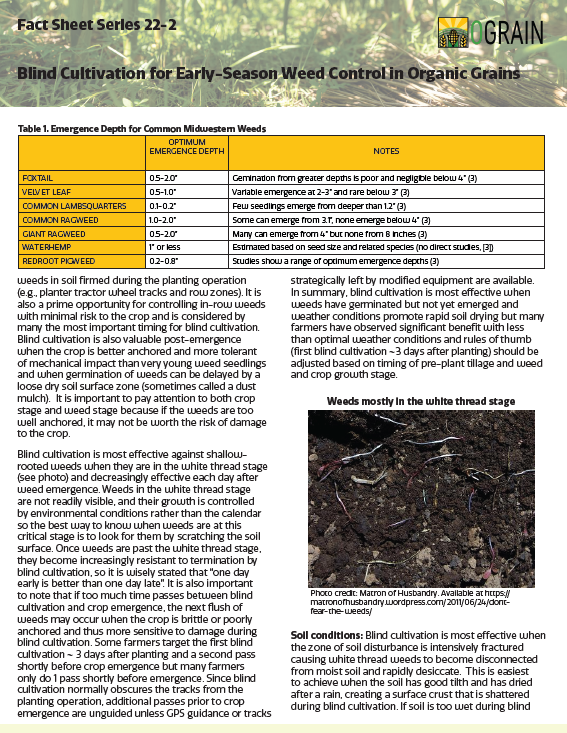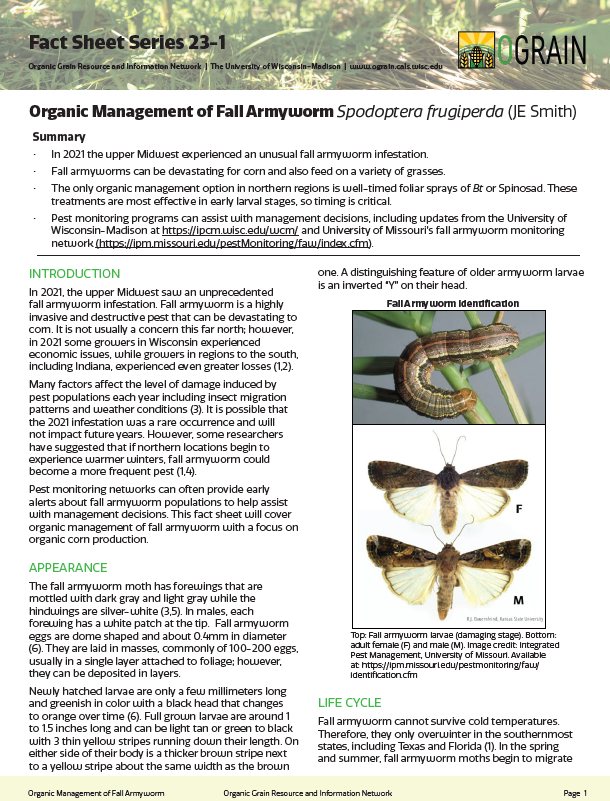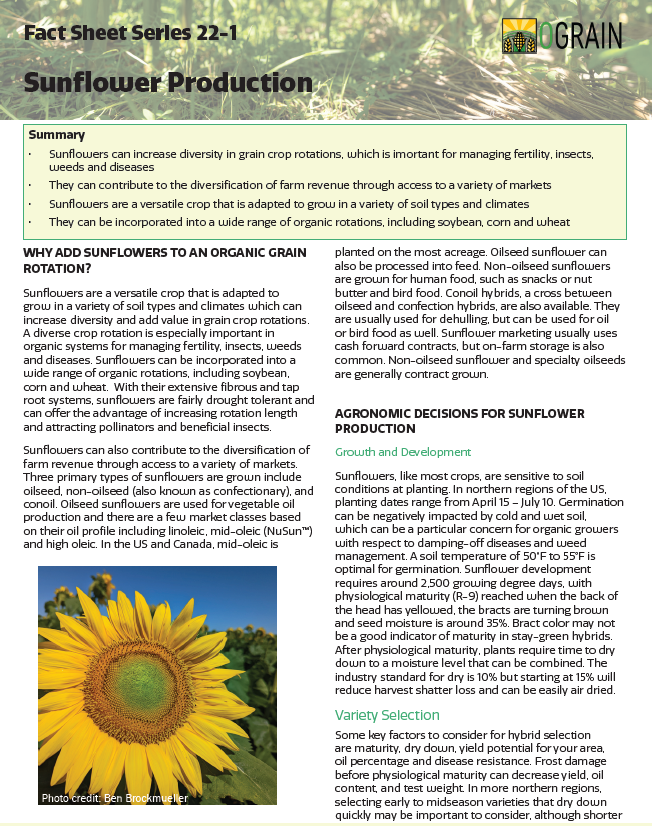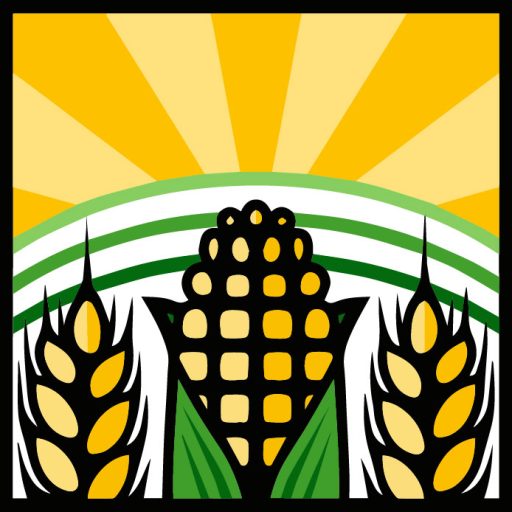OGRAIN Fact Sheet: Blind Cultivation for Early-Season Weed Control in Organic Grains (2023)
Questions about tine weeding or rotary hoeing? Dr Joel Gruver takes an in-depth dive into both practices in this practical fact sheet.
Blind cultivation provides early-season control of both in-row and inter-row weeds, giving crops a competitive advantage and improving effectiveness of row cultivation later in the season. It is commonly used in organic corn and organic soybean production systems. Tine weeders and rotary hoes are popular blind cultivation tools and this fact sheet provides crop-specific recommendations for both pieces of equipment.

OGRAIN Fact Sheet: Small Grain Marketing in the Upper Midwest (2023)
This fact sheet covers the growing range of market options for organic small grains.
From poultry feed to oat milk to premium whiskey, there are a growing range of market opportunities for organic small grains. If you are interested in adding a rotation of small grains to your operation, this resource provides an overview of some potential market options and contracts in the Upper Midwest with information on their use according to a 2022 study of small grain farmers.

OGRAIN Fact Sheet: Fall Armyworm
This fact sheet will cover organic management of fall armyworm with a focus on organic corn production.
- In 2021 the upper Midwest experienced an unusual fall armyworm infestation.
- Fall armyworms can be devastating for corn and also feed on a variety of grasses.
- The only organic management option in northern regions is well-timed foliar sprays. These treatments are most effective in early larval stages, so timing is critical.
- Pest monitoring programs can assist with management decisions, including updates from the University of Wisconsin-Madison at https://ipcm.wisc.edu/wcm/ and University of Missouri’s fall armyworm monitoring network (https://ipm.missouri.edu/pestMonitoring/faw/index.cfm).

OGRAIN Fact Sheet: Sunflower Production
This factsheet covers the benefits of incorporating sunflowers into crop rotations and the basics of sunflower production.
- Sunflowers can increase diversity in grain crop rotations, which is important for managing fertility, insects, weeds and diseases
- They can contribute to the diversification of farm revenue through access to a variety of markets
- Sunflowers are a versatile crop that is adapted to grow in a variety of soil types and climates
- They can be incorporated into a wide range of organic rotations, including soybean, corn and wheat

OGRAIN/ASA Fact Sheet: Soil Fertility Management for Organic Grain Production (2020, 2 page pdf)
OGRAIN/ASA Fact Sheet: Transitioning to Certified Organic Grain Production (2020, 2 page pdf)
OGRAIN/ASA Fact Sheet: The Organic Transition for Interested Clients – Questions to Consider for Crop Consultants (2020, 2 page pdf)
OGRAIN/ASA Fact Sheet: Insect and Disease Management in Organic Grain Production (2020, 2 page PDF)
OGRAIN/ASA Fact Sheet: Weed Management in Organic Grain Systems (2020, 2 page PDF)
OGRAIN Fact Sheet 20-2 Soybeans and Spring Planted Rye (2020, 5 page pdf)
Research from Arlington Research Station on interseeding spring planted cereal rye into soybeans. Authored by Léa Vereecke, UW Madison Research Specialist.
OGRAIN Fact Sheet 20-1 Biological Component of Soil Health (2020, 4 page pdf)
Biological soil health largely focuses on the important roles that microbes (bacteria and fungi) play. There has been a huge push to understand the role of soil organisms in soil health and how to quantify it. Author: Miranda Sikora, Agroecology Program and Department of Soil Science, University of Wisconsin-Madison
OGRAIN Fact Sheet 19-1 No-Till Soybean Trial 2018 (11 page pdf)
A description of 2018 research at the Arlington Agricultural Research Station, part of a larger organic no-till cropping systems trial. The trial had four different cover crops, a no-cover control, two planting strategies and three different planter closing wheels. Results showed that all the cover crops produced the same biomass before termination, but the rye was taller and covered the ground faster in the spring. The wheat grew slowly, and the triticale development was uneven. No-tilling the soybeans generally lowered the stand count compared to planting in bare ground, especially into triticale. Within the no-till treatments, early-planting had a negative impact on stand count as well. No-tilling the soybeans slowed down the vegetative growth in June for every cover crop and planting strategy.
OGRAIN Fact Sheet 18-1 No-Till Soybean Trial 2017
A description of 2017 research at the Arlington Agricultural Research Station, part of a larger organic no-till cropping systems trial. In this work we compare performance of different small grains as cover crops, as well as different soybean planting dates and crimping timing.
